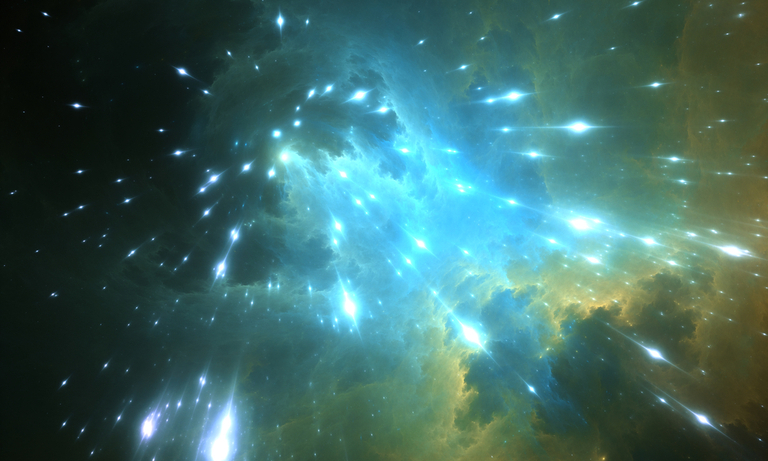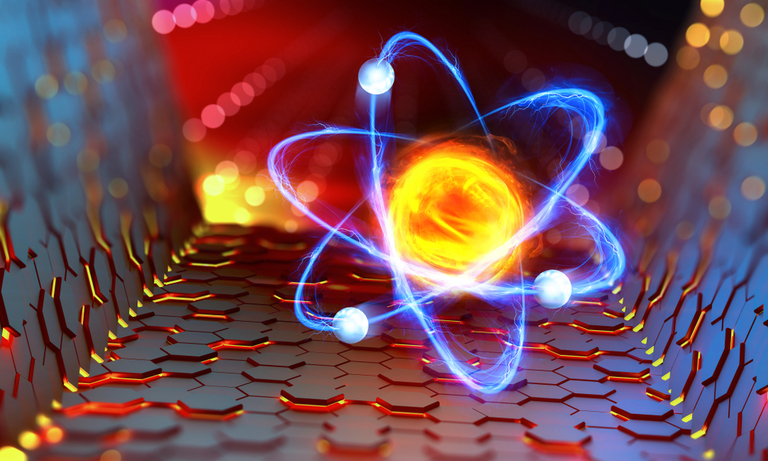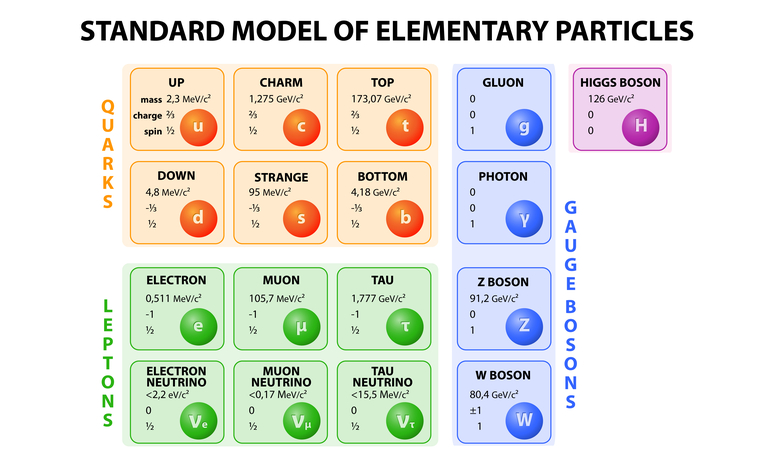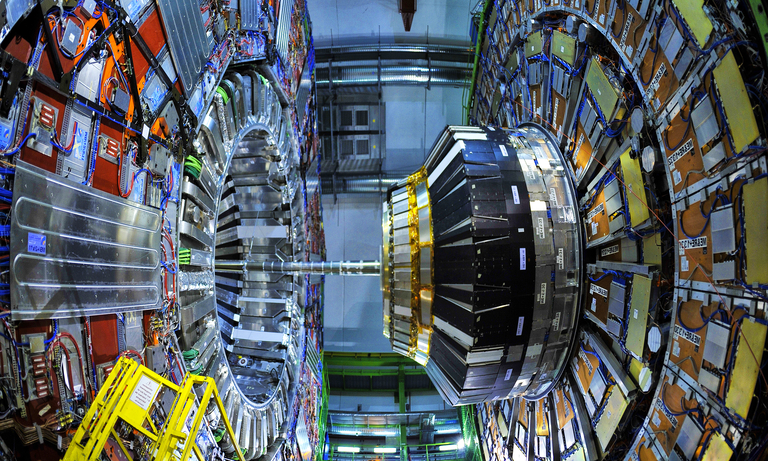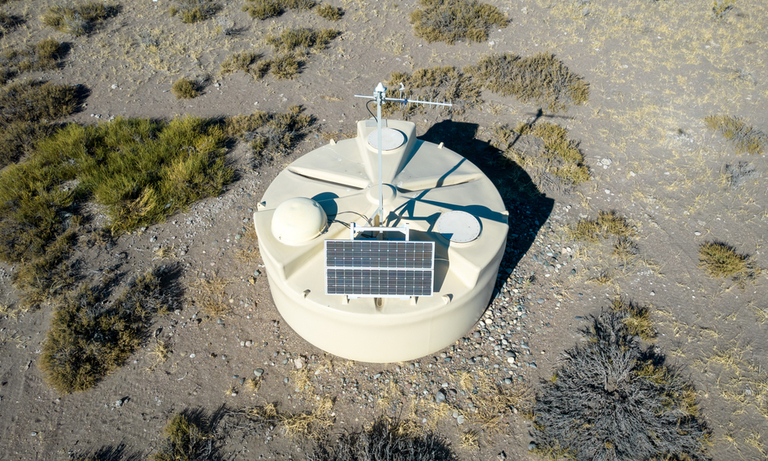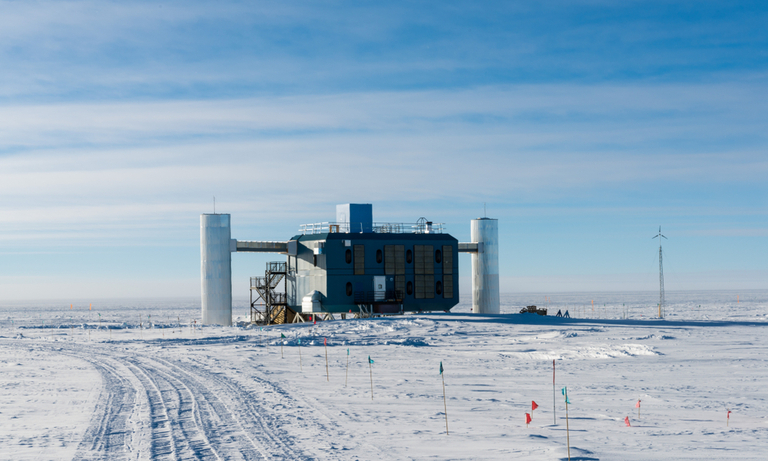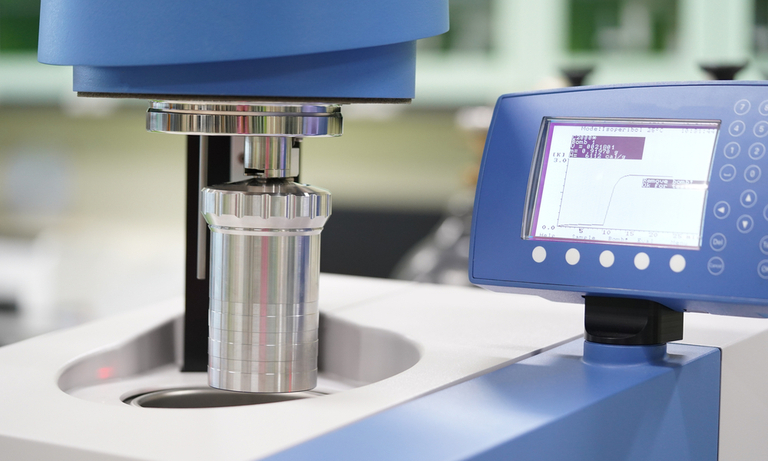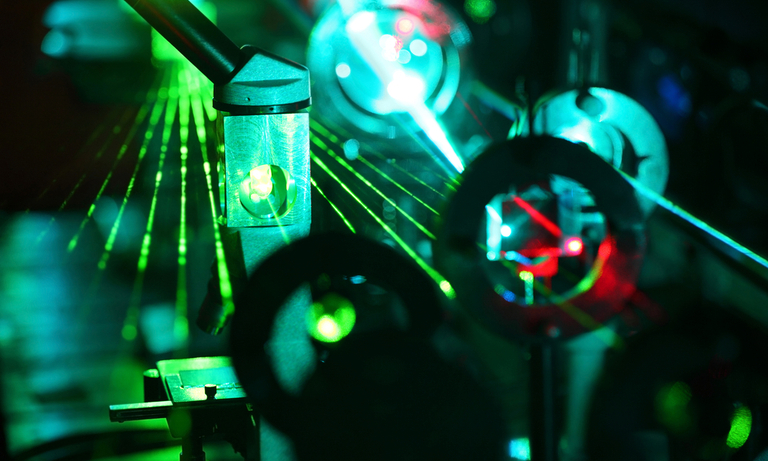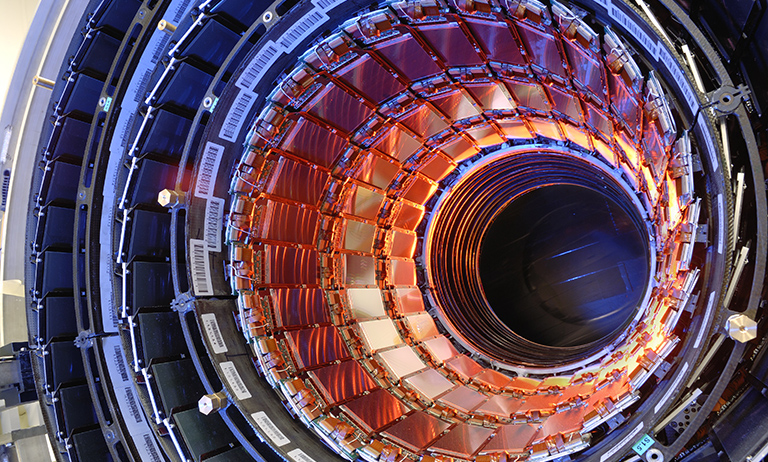Home
Products
Physics Research Field
Type of Experiment
Detector Type
Behind the Science
Tech in a Nutshell
United Kingdom (EN)
Select your region or country.


Dark Matter
In 1933 Fritz Zwicky, a Swiss astronomer who worked at the California Institute of Technology, measured the velocity dispersion of galaxies in the Coma cluster finding a value larger than expected from the estimated total mass of the cluster. Zwicky defined such unseen mass as “dark matter”.
These observations were confirmed later in the 1970s, when the data collected on the galactic rotational curves of spiral galaxies and definitively proved the presence of an amount of mass much larger than the optical size of galactic disks. The nature of dark matter is one of the most engaging challenges in modern physics.
Physicists can look for its effects by measuring the movements of galaxies, but what it is made of is still a mystery. This discovery would have a significant impact on the understanding of the formation of the large scale structure in the Universe and, it could lead to the empirical evidence of new unknown particles. Some ideas for dark matter particles could also solve other problems in particle physics.
Such particles should interact very weakly with matter and have about 1 to 1000 times the mass of a proton. Physicists called them WIMP, which is the acronym of Weakly Interacting Massive Particles.
One promising candidate is the neutralino, a particle predicted by Supersymmetry. Supersymmetry supposes that every known particle has a partner, explaining some of the unknowns in Standard Model particles.
The inevitable question which arises at this point is: how can we catch dark matter particles? Many experiments, in laboratories all around the word, are seeking dark matter particles using many different approaches. The current experiments can be divided in three categories: indirect search, direct search and accelerator based search experiments.
The first category looks for Standard Model particles produced in dark matter particles annihilation and direct search experiments try to detect the scattering of such particles off an atomic nucleus inside their detection volume. In accelerator based experiments, dark matter particles could be created in the collision of highly energetic particle beams.
Experiments exploiting an indirect search approach probe regions of the Galaxy where a high density of dark matter particles is expected. In those regions, the random chance of dark matter particles annihilation is enhanced. When annihilations occur, gamma-rays or particle-antiparticle pairs are produced.
This additional particle flux then could be observed by satellites or telescopes on Earth. This approach, however, does not yield a unique answer, as gamma-ray and particle backgrounds are often not understood to the level of precision needed. Examples of such experiments are AMS (Alpha Magnetic Spectrometer) and ANTARES (Astronomy with a Neutrino Telescope and Abyss environmental RESearch). AMS is an experiment installed on the International Space Station. It includes several detectors which help in particle identification.
AMS measures electrons, positrons, antiprotons and nuclei to the TeV energy range in order to study the cosmic ray spectrum. Dark matter particles are detected indirectly looking for an excess of positrons in the measured spectrum. Hamamatsu R5900 PMTs have been used to measure the signals generated when the particles pass through the AMS detectors. ANTARES is a neutrino telescope located 2475 meters under the Mediterranean Sea, 40 km off the coast of Toulon in France. It is very sensitive to WIMPs accumulated in the center of our galaxy, since it is visible from the ANTARES location, and in the Sun.
This experiment uses an array of Hamamatsu photomultipliers, type R7081-20, in vertical strings, spread over an area of around 0.1 square kilometers.

Schematic drawing of the principle of detection used by the XENON100 experiment.
Direct search experiments aim for the detection of dark matter particles looking for nuclear recoils produced by such particles scattered off target nuclei. This would produce a recoiling target nucleus which can be detected if sufficient energy is transferred by the collision.
The main difficulty is the discrimination of events induced by external radiation that can mimic the scattering of a dark matter particle.
Therefore, such experiments are usually located in deep underground laboratories and use pure material as a target and detectors. Further backgrounds can be reduced only by selecting detector materials which contain the tiniest traces of radioactive impurities.
Most of today’s direct search experiments use three techniques to detect the nuclear recoil: induced heat, ionization signal and/or scintillation light. XENON100 (with the future upgrades XENON1T and XENONnT) as well as DarkSide are examples of direct search experiments. The XENON100 Dark Matter Search is an experiment located underground in the INFN Gran Sasso Laboratories, which use a double phase Time Projection Chamber (TPC) filled with liquid xenon and a gaseous xenon layer on top at a temperature of about -95 °C. A particle interacting in liquid xenon produces a prompt scintillation signal through excitation and recombination of ionization electrons.
These electrons are drifted towards the liquid-gas interface where they produce a secondary scintillation signal.
Two arrays of Hamamatsu R8520-06-AL 1 inch square PMTs, one on top of the TPC and the other on the bottom, detect the light in the TPC. With a combination of large mass and ultra-low background detectors, the XENON100 project is leading this field with some of the most stringent limits on the interaction between WIMPs and normal matter.
The DarkSide program plans to develop a series of novel dual phase liquid argon TPCs. The detectors will use several innovative techniques to identify dark matter signals and to understand and suppress backgrounds. After a successful prototype (DarkSide-10), the first physics detector in the DarkSide program is DarkSide-50 (DS-50), currently situated in the INFN Gran Sasso National Laboratory. The detector has an active mass of 50 kg and has enough sensitivity to search for WIMPs with a mass 100 times greater than the mass of a proton. The DS-50 two-phase liquid argon TPC uses a detection technique similar to XENON100. The scintillation light is recorded by thirty-eight 3 inch Hamamatsu low-background R11065 PMTs, 19 each on the top and bottom to view the active argon. The construction of DarkSide-50 was completed in late 2012, and the physics data collection began in 2013.
The Xenon collaboration recently started to run Xenon1T experiment with improved performance in terms of detection capability compared to previous detector XENON100
Physicists using the Large Hadron Collider (LHC) at CERN are looking for dark matter particles produced in the proton-proton collision. The energies achieved by such an accelerator are high enough to create yet unknown particles that may have the properties required to account for dark matter.
If dark matter particles are produced in proton-proton collisions at the LHC, experiments such as ATLAS and CMS should measure less energy than predicted. Indeed, dark matter must be stable over long timeframes and interact only very rarely.
Therefore, if produced, it must escape the detector without leaving any further trace.
- Confirmation
-
It looks like you're in the . If this is not your location, please select the correct region or country below.
You're headed to Hamamatsu Photonics website for GB (English). If you want to view an other country's site, the optimized information will be provided by selecting options below.
In order to use this website comfortably, we use cookies. For cookie details please see our cookie policy.
- Cookie Policy
-
This website or its third-party tools use cookies, which are necessary to its functioning and required to achieve the purposes illustrated in this cookie policy. By closing the cookie warning banner, scrolling the page, clicking a link or continuing to browse otherwise, you agree to the use of cookies.
Hamamatsu uses cookies in order to enhance your experience on our website and ensure that our website functions.
You can visit this page at any time to learn more about cookies, get the most up to date information on how we use cookies and manage your cookie settings. We will not use cookies for any purpose other than the ones stated, but please note that we reserve the right to update our cookies.
1. What are cookies?
For modern websites to work according to visitor’s expectations, they need to collect certain basic information about visitors. To do this, a site will create small text files which are placed on visitor’s devices (computer or mobile) - these files are known as cookies when you access a website. Cookies are used in order to make websites function and work efficiently. Cookies are uniquely assigned to each visitor and can only be read by a web server in the domain that issued the cookie to the visitor. Cookies cannot be used to run programs or deliver viruses to a visitor’s device.
Cookies do various jobs which make the visitor’s experience of the internet much smoother and more interactive. For instance, cookies are used to remember the visitor’s preferences on sites they visit often, to remember language preference and to help navigate between pages more efficiently. Much, though not all, of the data collected is anonymous, though some of it is designed to detect browsing patterns and approximate geographical location to improve the visitor experience.
Certain type of cookies may require the data subject’s consent before storing them on the computer.
2. What are the different types of cookies?
This website uses two types of cookies:
- First party cookies. For our website, the first party cookies are controlled and maintained by Hamamatsu. No other parties have access to these cookies.
- Third party cookies. These cookies are implemented by organizations outside Hamamatsu. We do not have access to the data in these cookies, but we use these cookies to improve the overall website experience.
3. How do we use cookies?
This website uses cookies for following purposes:
- Certain cookies are necessary for our website to function. These are strictly necessary cookies and are required to enable website access, support navigation or provide relevant content. These cookies direct you to the correct region or country, and support security and ecommerce. Strictly necessary cookies also enforce your privacy preferences. Without these strictly necessary cookies, much of our website will not function.
- Analytics cookies are used to track website usage. This data enables us to improve our website usability, performance and website administration. In our analytics cookies, we do not store any personal identifying information.
- Functionality cookies. These are used to recognize you when you return to our website. This enables us to personalize our content for you, greet you by name and remember your preferences (for example, your choice of language or region).
- These cookies record your visit to our website, the pages you have visited and the links you have followed. We will use this information to make our website and the advertising displayed on it more relevant to your interests. We may also share this information with third parties for this purpose.
Cookies help us help you. Through the use of cookies, we learn what is important to our visitors and we develop and enhance website content and functionality to support your experience. Much of our website can be accessed if cookies are disabled, however certain website functions may not work. And, we believe your current and future visits will be enhanced if cookies are enabled.
4. Which cookies do we use?
There are two ways to manage cookie preferences.
- You can set your cookie preferences on your device or in your browser.
- You can set your cookie preferences at the website level.
If you don’t want to receive cookies, you can modify your browser so that it notifies you when cookies are sent to it or you can refuse cookies altogether. You can also delete cookies that have already been set.
If you wish to restrict or block web browser cookies which are set on your device then you can do this through your browser settings; the Help function within your browser should tell you how. Alternatively, you may wish to visit www.aboutcookies.org, which contains comprehensive information on how to do this on a wide variety of desktop browsers.
5. What are Internet tags and how do we use them with cookies?
Occasionally, we may use internet tags (also known as action tags, single-pixel GIFs, clear GIFs, invisible GIFs and 1-by-1 GIFs) at this site and may deploy these tags/cookies through a third-party advertising partner or a web analytical service partner which may be located and store the respective information (including your IP-address) in a foreign country. These tags/cookies are placed on both online advertisements that bring users to this site and on different pages of this site. We use this technology to measure the visitors' responses to our sites and the effectiveness of our advertising campaigns (including how many times a page is opened and which information is consulted) as well as to evaluate your use of this website. The third-party partner or the web analytical service partner may be able to collect data about visitors to our and other sites because of these internet tags/cookies, may compose reports regarding the website’s activity for us and may provide further services which are related to the use of the website and the internet. They may provide such information to other parties if there is a legal requirement that they do so, or if they hire the other parties to process information on their behalf.
If you would like more information about web tags and cookies associated with on-line advertising or to opt-out of third-party collection of this information, please visit the Network Advertising Initiative website http://www.networkadvertising.org.
6. Analytics and Advertisement Cookies
We use third-party cookies (such as Google Analytics) to track visitors on our website, to get reports about how visitors use the website and to inform, optimize and serve ads based on someone's past visits to our website.
You may opt-out of Google Analytics cookies by the websites provided by Google:
https://tools.google.com/dlpage/gaoptout?hl=en
As provided in this Privacy Policy (Article 5), you can learn more about opt-out cookies by the website provided by Network Advertising Initiative:
http://www.networkadvertising.org
We inform you that in such case you will not be able to wholly use all functions of our website.
Close


